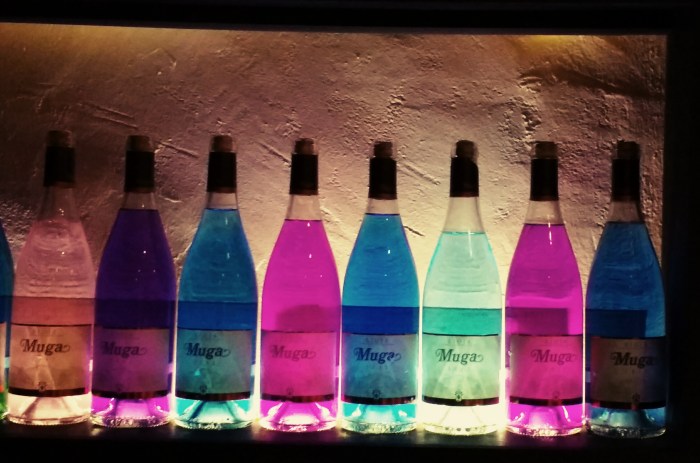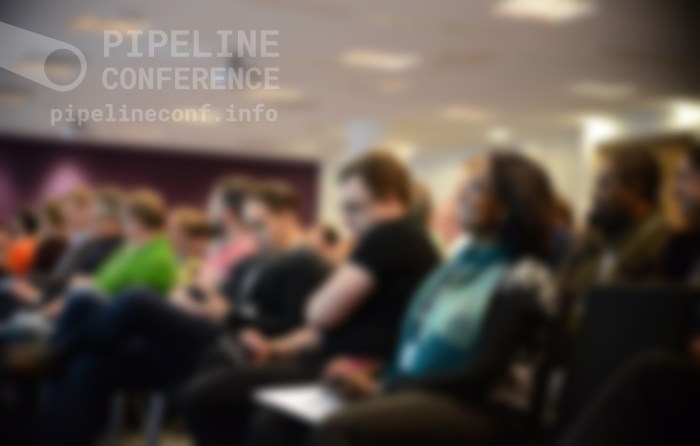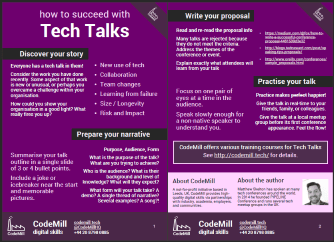I have been helping to promote greater diversity in tech conferences and tech meetups since 2012. Here is my thinking on how to promote diversity in tech events and why I think diversity is important.
Update: please first read this post from Trisha Gee: What Can Conferences Do To Attract More Women Speakers? and then this post by Jez Humble on How To Create A More Diverse Tech Conference. Trisha and Jez make many excellent points; in this post I try to offer some additional perspectives.
Since 2012 I have been running several meetups and conferences with a technology focus: London Continuous Delivery meetup group (2500+ members with around 80 different speakers in total), PIPELINE Conference (5 events since 2014 with around 50 different speakers), CodeMill digital skills meetup, and Assembly Conference. I have been keen to attract and promote a diverse range of speakers and attendees to all these events, and I think (with help from amazing team members) we have been fairly successful in promoting diversity in these tech events.

Much of this diversity improvement has been focused on encouraging more women to speak and attend, but of course there is more to diversity than just gender; recently, I have tried to address other aspects too, including ethnic background, social class, and also personality “type” (particularly more introverted people).
Why is diversity important for tech conferences and tech meetups?
In the UK, the US, and parts of Europe, the tech industry has a significant deficit in diversity, both generally and also at events like conferences and meetups (this problem is less marked in other places, particularly India and some Asia-Pacific countries). I believe (with anecdotal evidence) that part of the reason that the IT sector has failed so spectacularly over the past 20 years to deliver enough useful results on time to business stakeholders is the lack of diversity in the workforce. There are simply too many people who think and act in too similar a way for us to be able to be as useful as we should be in society. A study with 20,000 companies in 91 countries showed that Companies With Women in Top Management Are Much More Profitable. By including and promoting greater diversity at conferences and meetups, we can start to tip the balance.
So the #1 reason to improve diversity is so that we delivery better business results.
Second: it’s the right thing to do. Sexism, racism, and other forms of discrimination have no place in any forward-thinking industry. To attract the best talent – whatever that person’s background – we need to make technology a welcoming place. The medical and legal professions in the UK used to be entirely male-dominated but now (2018) both these sectors have essentially 50:50 female:male workforce including in senior roles (it’s not quite, but very close). Other diversity factors are further behind, but improving. Contrast this with the IT sector in the UK with a woeful 1:6 ratio of women to men. If the IT sector wants the best and brightest people (or even just more above-average people), then we need to remove barriers to participation. For me, this is partly selfish: I want to work with really good people, irrespective of their gender, skin colour, religion, ethnicity, etc.
Reason #2 for diversity: attract the best people.
And third: with greater diversity comes a greater solution space. If all your engineers are similar in many aspects, they will likely approach problems in a similar way, potentially missing out on novel or unusual solutions. This means we need to hire people with backgrounds in art, history, music, politics, etc., together with people from less wealthy backgrounds, as well as usual people with more specifically technical skills. With this greater diversity will come a richer, more creative problem-solving ability for the organisation. In an age where rapid, nimble solutions can be worth £millions, this is a key engineering approach.
Reason #3 for diversity: better engineering solutions.
8 tips for more diverse tech conferences and tech events

Here, then, are eight things that I have specifically used to increase diversity at tech events.
1. Have a 50:50 women:men organising team
Make your organising team visibly represent some of the diversity you seek to achieve. From the early days before the first PIPELINE Conference, I knew we should have a 50:50 women:men organising team. This has been a key part of our success at PIPELINE in creating a friendly and welcoming conference. It also helps that everyone on the team is a superstar at their day job, so everyone has direct, relevant experience to contribute to the technical subject matter (Continuous Delivery).
2. Invite women to give keynote talks
Three out of the past seven keynote talks at PIPELINE Conference were given by women we invited (almost half!). We sensed that having women give some of the keynote talks was a powerful way to promote diversity, and over the course of five conferences (2014 to 2018) we have seen a steady increase in the number of women applying to speak, speaking, and also attending.
3. Reach out to groups like Ada’s List and CallbackWomen
There are many groups that help to promote conferences that support diversity, including Ada’s List BCSWomen, Women Who Code, DevChix the excellent CallBackWomen Twitter account. Reach out to these groups (this should probably by done by the women or other less-represented people in your committee rather than by the white blokes). Point them to your Code Of Conduct (you do have a CoC, right?!), and explain to them how you are addressing diversity (see point 7 below).
4. Approach people directly
Many people from less represented groups, particularly women, can feel hesitant to submit talks or even attend a conference if they are unsure of the atmosphere and welcome they will receive. Invite people personally if you can, or even impersonally on Twitter, but don’t expect an immediate up-tick in interest or attendance. You will have to prove the diversity over several instalments of the conference or meetup before people will trust that your diversity credentials are sound.
5. Run training for new speakers
Speaking in public can be a nerve-wracking idea for newcomers, especially those who are more shy. In the past year I have run several workshops to help new speakers get to grips with preparing and giving a talk in public: Tech Talks for Beginners. We have had several people go on to giving talks at meetups and conferences after completing the workshop, and this has helped (in a small way) to increase the diversity of people speaking at tech events.
Download this PDF guide How to succeed with Tech Talks and send to your colleagues and friends; it covers the key points from the 1-day workshop:
6. Connect with local meetup groups and user groups
Attend local meetup groups and get talking to people. Make connections. Tell them about your conference or event, and say that you’d really like to see them there. Give them a flyer or leaflet and share a discount code for tickets.
I have found it useful to have a meetup group that relates to a conference I’m involved with. It was my early experience with London Continuous Delivery meetup group in 2012 and 2013 that led me to start PIPELINE Conference, and so it was very useful to have an existing community of people to reach out to when forming the conference, particularly for potential speakers. Likewise, through the CodeMill digital skills meetup group we have found some excellent speakers for Assembly Conference.
7. Highlight meaningful diversity measures on the website and at the event
Your website and marketing materials are your “shop window” – they tell people what matters to you (Trisha Gee makes this point in her blog post: Your Website And Marketing Material Should Represent The People You Want To Attract). For this reason we decided to highlight three things on the PIPELINE Conference 2018 website:
- Accessibility
- Food – including dietary requirements
- Diversity
We used the excellent venue at etc.venues Victoria for four years because not only are the staff and food excellent but it was also highly accessible for people with mobility problems. After earlier years with web accessibility issues, we made the 2018 website more accessible. We also provided a Quiet Room for people who find noisy conferences stressful.

We explicitly identified that we can provide not just vegetarian options but also meals to meet kosher, halal, and other specific dietary requirements. The extra cost we covered by sponsorship money.
People use an ensemble of different signals to work out if they will feel welcome, so you must use multiple ways to show your commitment to diversity.
8. Bootstrap out of the mono-culture by promoting women and other less-represented people
Ultimately, you may have to treat better diversity as a “bootstrap” problem and deliberately skew some of your photos, speakers, marketing messages, etc. so that they all appear more diverse than you are currently, thereby attracting a more diverse range of people. Once you have bootstrapped the event out of the mono-culture tar pit, you can hope to get more “natural” diversity.
Thanks to Alex Yates and colleagues at SQL Relay for interviewing me about conference diversity – this led to me writing up my notes in this blog post.
Thanks also to my amazing colleagues at PIPELINE Conference for a remarkable experience organising the conferences: Amy, Anthony, Beccy, Chris, Inka, and Steve.

I’d add one thing to the 50/50 split in organizers. I used to be a professional Community Manager, running a major tech community. I was invited to be a part of the organizing group of a community/tech conference 7 or 8 years ago ago by a very well meaning group of men who were trying to get it off the ground, and they specifically said they were hoping that I would be involved so that there would be more women organizers visible, even if I had less time to contribute to the overall organizing. I said yes, and I did volunteer quite a bit of time to help. I was the only woman. I volunteered to help with food and the venue setup, and a couple of other small things.
The guys involved helped with everything except the food. Not the setup, not the serving, not the cleanup. When I asked them for help they all had to run to attend another session. The upshot? I did not get to attend a single session, and one of them asked me what I was going to do with all the leftovers, since it was a shame to throw it away.
The were upset when I refused to do anything with the food next year. I did attend and happened to be one of the last in line to get food on the day of the conference, and the guy who had set it up asked me to help move some things off the table for a couple of minutes. He then disappeared to go to the next talk and never came back. I never went back either.
My point? Think about what the “girl jobs” are, and make sure that men are responsible for at least half of them.
Thanks, Sonya – excellent advice.